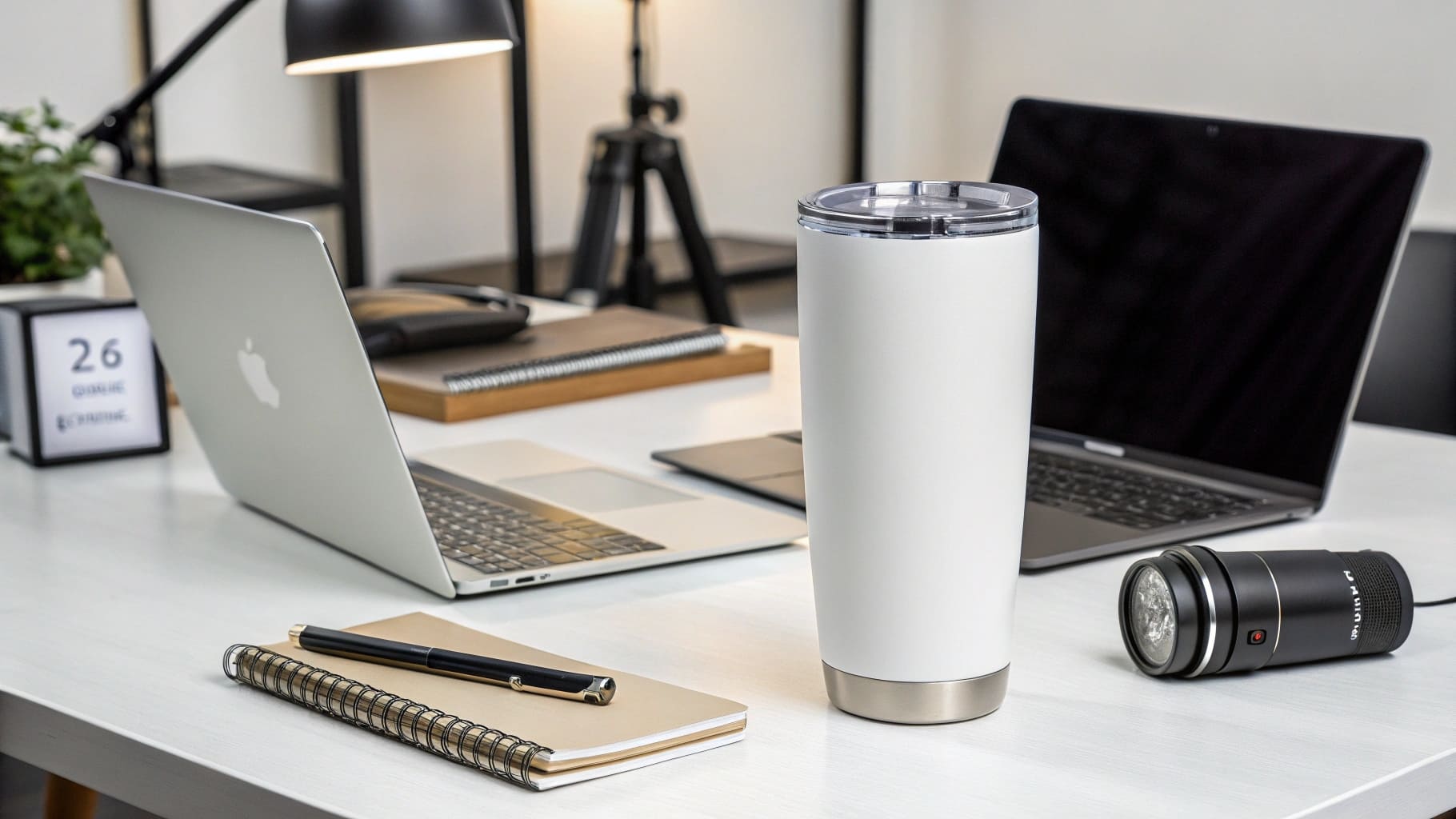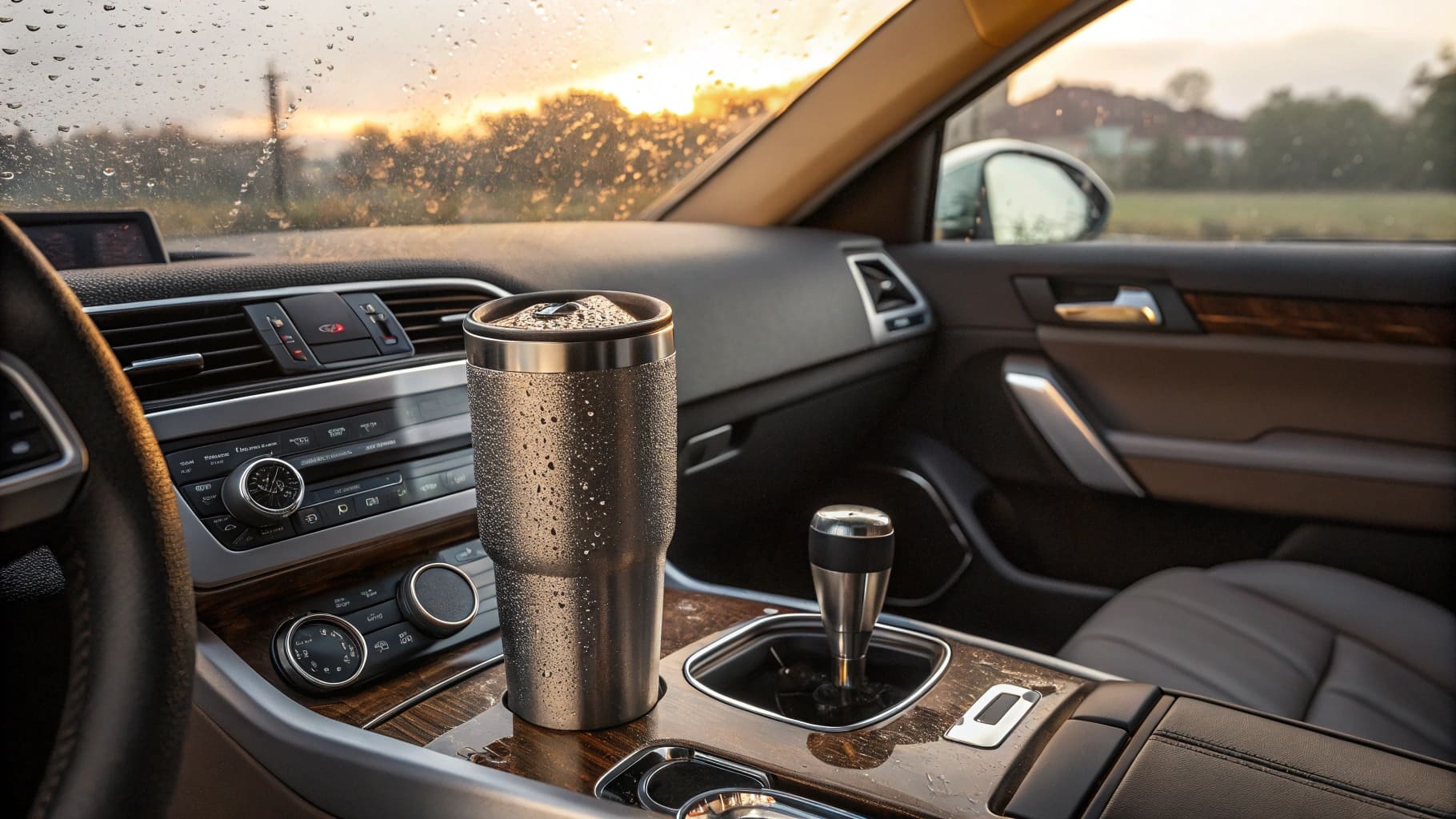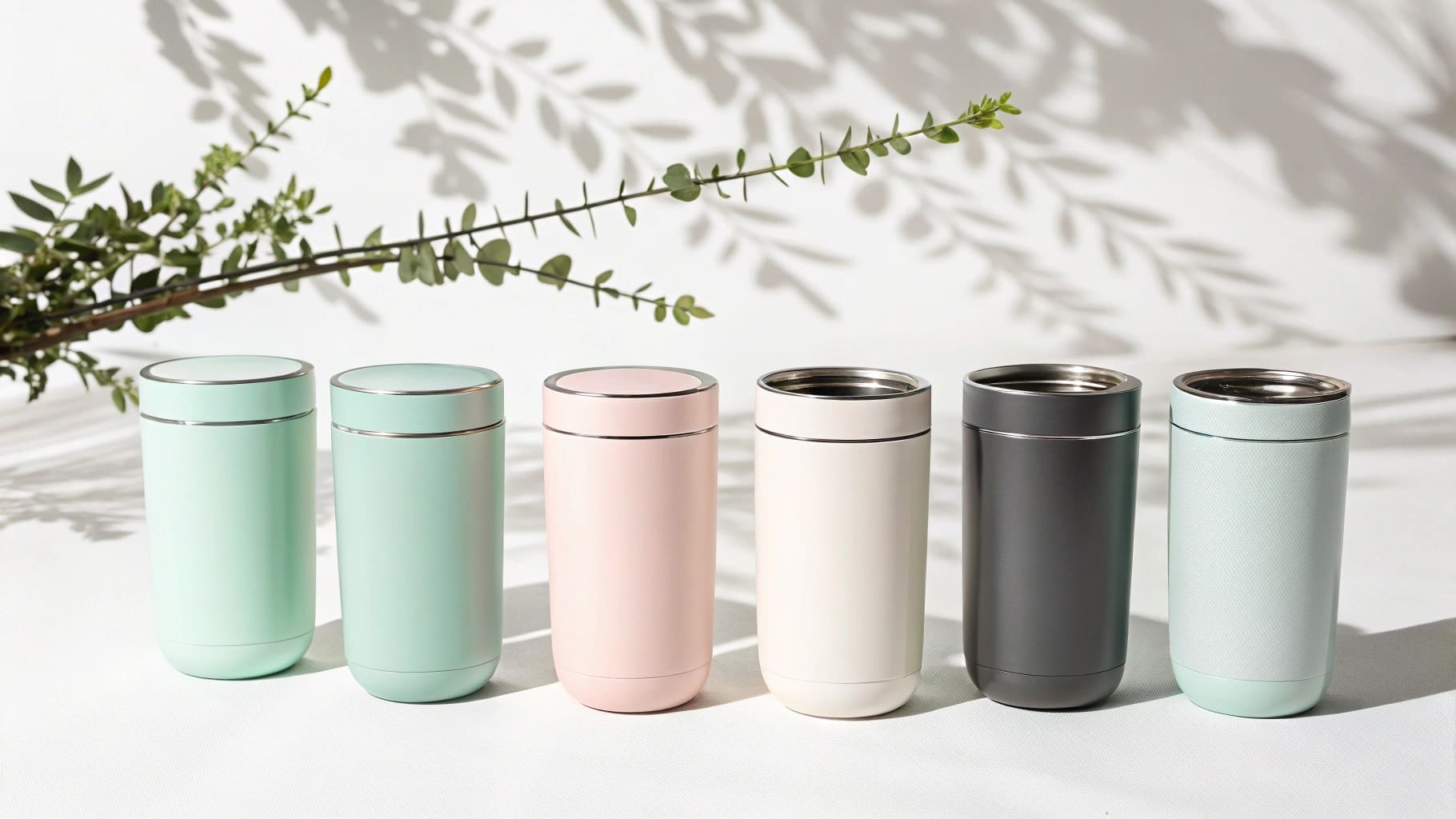Your customers hate single-use plastic waste. They want a better way to drink on the go. Stainless steel tumblers are the durable, eco-friendly solution they are searching for.
Stainless steel tumblers are popular because they are eco-friendly, replacing single-use plastics. They also keep drinks hot or cold for hours, making them very practical for daily life. This combination of sustainability and function drives their massive appeal among modern consumers looking for quality and convenience.

This growing trend is more than just a consumer habit. It is a huge business opportunity. I see it every day with clients like Mark from Canada. He successfully buys tumblers from us and rebrands them for his market. But to succeed like him, you need to understand the details. Let's break down how you can turn this popularity into profit.
Is Sourcing Tumblers a Profitable Business?
You see tumblers everywhere but wonder about the profit margins. Fierce competition and sourcing risks can feel overwhelming. But a smart sourcing strategy can lead to excellent returns.
Yes, selling tumblers is profitable. You buy low from a wholesale supplier1 like us and sell high after rebranding. The key is finding a balance between good quality and competitive cost. This allows for a healthy markup and appeals to quality-conscious consumers in your market.

To make your tumbler business profitable, you have to look beyond the simple buy-and-sell model. It starts with your sourcing partner2.
Finding the Right Supplier
A reliable supplier is your biggest asset. When I work with clients, I know they need more than just a product. They need a partner. They need clear communication and consistent quality. A good supplier like Icobottle helps you avoid costly delays and quality issues that eat into your profits. Certificate fraud is a real risk, so working with a trusted factory is essential.
Understanding Your Costs
Your final profit depends on managing several costs. It is not just the unit price of the tumbler.
| Cost Factor | Description | Impact on Profit |
|---|---|---|
| Unit Price | The cost per tumbler from the factory. | Biggest direct cost. |
| Customization | Logo printing, color changes, packaging. | Adds value but increases cost. |
| Shipping | Sea or air freight to your country. | Can be a significant expense. |
| Duties & Taxes | Import fees for your country. | A necessary cost to budget for. |
Maximizing Your Margin
To maximize profit, focus on value. High-quality tumblers with great insulation and a sleek design can command a higher price. Offering custom branding for corporate clients is another way to increase your revenue stream significantly. It is about selling a premium product, not just a cup.
Why Is a Stainless Steel Tumbler Considered Eco-Friendly?
Your customers hear "eco-friendly" all the time. They are tired of vague claims and want real sustainable products. Stainless steel tumblers offer clear benefits you can proudly market.
A stainless steel tumbler is eco-friendly mainly because it is reusable. It directly replaces countless single-use plastic bottles and paper cups. It is also very durable, lasting for years, and stainless steel itself is 100% recyclable, reducing landfill waste at the end of its life.

The "eco-friendly" label is a powerful selling point, but you need to understand the facts behind it to be convincing. I always explain these three key points to my clients.
Reducing Single-Use Waste
This is the most obvious benefit. A single person can prevent thousands of plastic bottles and disposable cups from entering landfills and oceans just by using one reusable tumbler. This is a simple, powerful message that resonates with environmentally conscious consumers. It is a story you can tell on your packaging and marketing materials.
Durability and Longevity
Unlike plastic or glass, stainless steel is incredibly tough. It does not break or degrade easily. A customer buys one tumbler and can use it for years, maybe even a decade. This longevity means fewer resources are used over time to create replacement products. It is the opposite of the throwaway culture we are trying to escape.
Material Recyclability
What happens when the tumbler finally reaches the end of its life? Stainless steel, especially food-grade types like 304, is one of the most recycled materials on the planet. It can be melted down and reformed into new products without losing its quality. This closed-loop potential makes it a truly sustainable choice from start to finish.
Where Are the Best Channels to Sell Your Tumblers?
You have a stock of high-quality tumblers ready to go. But where do you find the right buyers? Choosing the wrong sales channel can mean slow sales and wasted inventory.
The best places to sell tumblers are diverse. Online stores and platforms like Amazon reach a huge audience. Physical retail shops are great for impulse buys. The corporate gifting market is also very lucrative, where companies buy branded tumblers for employees or clients.

Finding the right sales channel depends on your business model. I have seen my clients find success in several areas. It is smart to consider a mix of these options.
Online Retail (E-commerce)
This is where most businesses start. You can build your own website using Shopify or sell on massive marketplaces like Amazon. Online gives you direct access to customers all over the country, or even the world. The key here is good photography and clear product descriptions that highlight benefits like insulation and eco-friendliness. Digital marketing is essential to drive traffic to your listings.
Brick-and-Mortar Stores
Do not underestimate physical retail. Boutiques, outdoor gear shops, coffee shops, and even university bookstores are perfect places for tumblers. Customers can see and feel the quality, which often leads to an immediate purchase. Partnering with these retailers can get your product in front of thousands of people every day.
Corporate Gifting Programs
This is a huge, often overlooked market. Companies are always looking for premium gifts for their staff, events, or top clients. I do a lot of business providing customized tumblers with company logos. This is a B2B sale for you, often involving large orders and creating a steady revenue stream. Reach out to HR departments or marketing managers.
What Are the Main Types of Stainless Steel Tumblers?
The market has many tumbler styles, which can be confusing. Stocking the wrong type can lead to unsold inventory. Knowing the two main categories helps you choose the right products.
The two main types are single-wall and double-wall insulated tumblers. Single-wall is lightweight and affordable but offers no temperature control. Double-wall vacuum insulated tumblers are the most popular, as they keep drinks hot or cold for hours, providing superior performance and value.

When sourcing tumblers, this is one of the most important technical details to understand. Your choice here defines your product's performance and target audience.
Single-Wall Tumblers
Think of these as a simple, durable cup made of steel. They are lightweight, easy to clean, and usually less expensive. However, they have no insulation. A hot drink will make the outside hot to the touch, and a cold drink will cause condensation. They are best for room-temperature drinks or situations where cost is the absolute top priority.
Double-Wall Vacuum Insulated Tumblers
This is the king of the tumbler world. It has an inner wall and an outer wall with a vacuum sealed in between. This vacuum stops heat transfer. So, your coffee stays hot for hours, and your iced tea stays cold all afternoon without sweating. This is what most consumers want and are willing to pay more for.
Here is a simple breakdown:
| Feature | Single-Wall Tumbler | Double-Wall Insulated Tumbler |
|---|---|---|
| Insulation | None | Excellent (Keeps hot/cold) |
| Condensation | Yes (with cold drinks) | No |
| Cost | Lower | Higher |
| Best For | Price-conscious buyers, room temp drinks | Performance, coffee, iced drinks |
For almost every client, including Mark in Canada, I recommend focusing on double-wall insulated tumblers. The performance benefit is the main reason these products are so popular.
What Core Needs Does a Tumbler Fulfill for People?
You know people buy tumblers, but what is the real motivation? If your marketing does not address their core needs, it will not be effective. Tumblers solve very specific, daily problems.
People need a tumbler for two main reasons: functionality and identity. Functionally, it provides hydration and keeps beverages at the desired temperature on the go. For identity, it acts as a personal accessory that signals their values, like environmental consciousness or love for a brand.

Understanding the customer's "why" is the secret to great marketing. It is not just about a cup. It is about the job that cup does in their life.
The Need for Convenience and Performance
Life is busy. People commute, run errands, and work long hours. They want their morning coffee to stay hot through the commute and their water to stay cold at the gym. A high-quality tumbler delivers this performance reliably. It is a small, daily luxury that makes a busy life a little bit easier. This convenience is a powerful selling point.
The Need for Hydration
Health and wellness are huge trends. People are more aware than ever of the need to drink enough water throughout the day. A tumbler is a constant visual reminder to hydrate. Having a large-capacity tumbler on their desk means fewer trips to the water cooler and an easy way to track their intake.
The Need for Self-Expression
A tumbler is like a phone case or a handbag—it is an accessory. The color, the brand logo, the stickers on it—they all say something about the owner. People choose tumblers that reflect their personality or the groups they belong to. This is why customization is so important. When you offer custom colors and logos, you are not just selling a cup. You are selling a piece of their identity.
Conclusion
Tumblers are popular for their green credentials and top performance. For businesses, this trend is a profitable opportunity based on meeting clear consumer demands for function and modern style.

